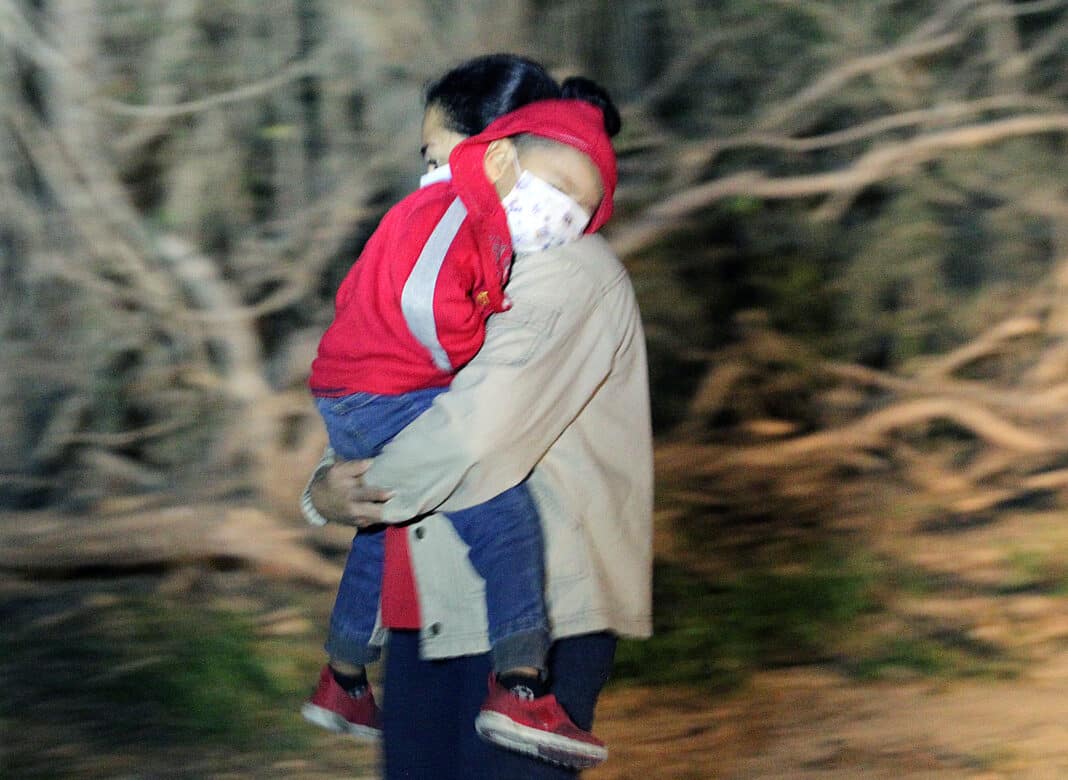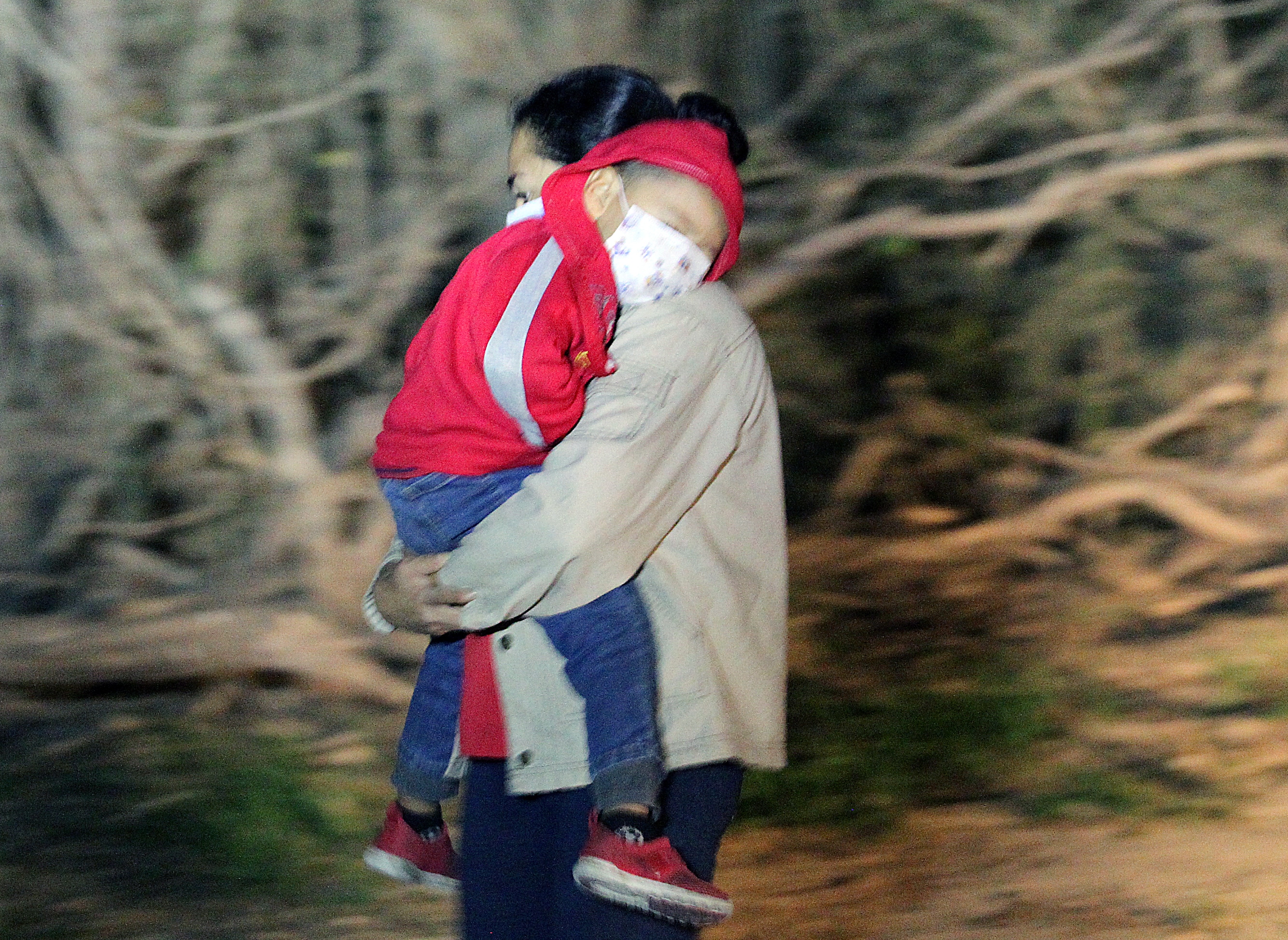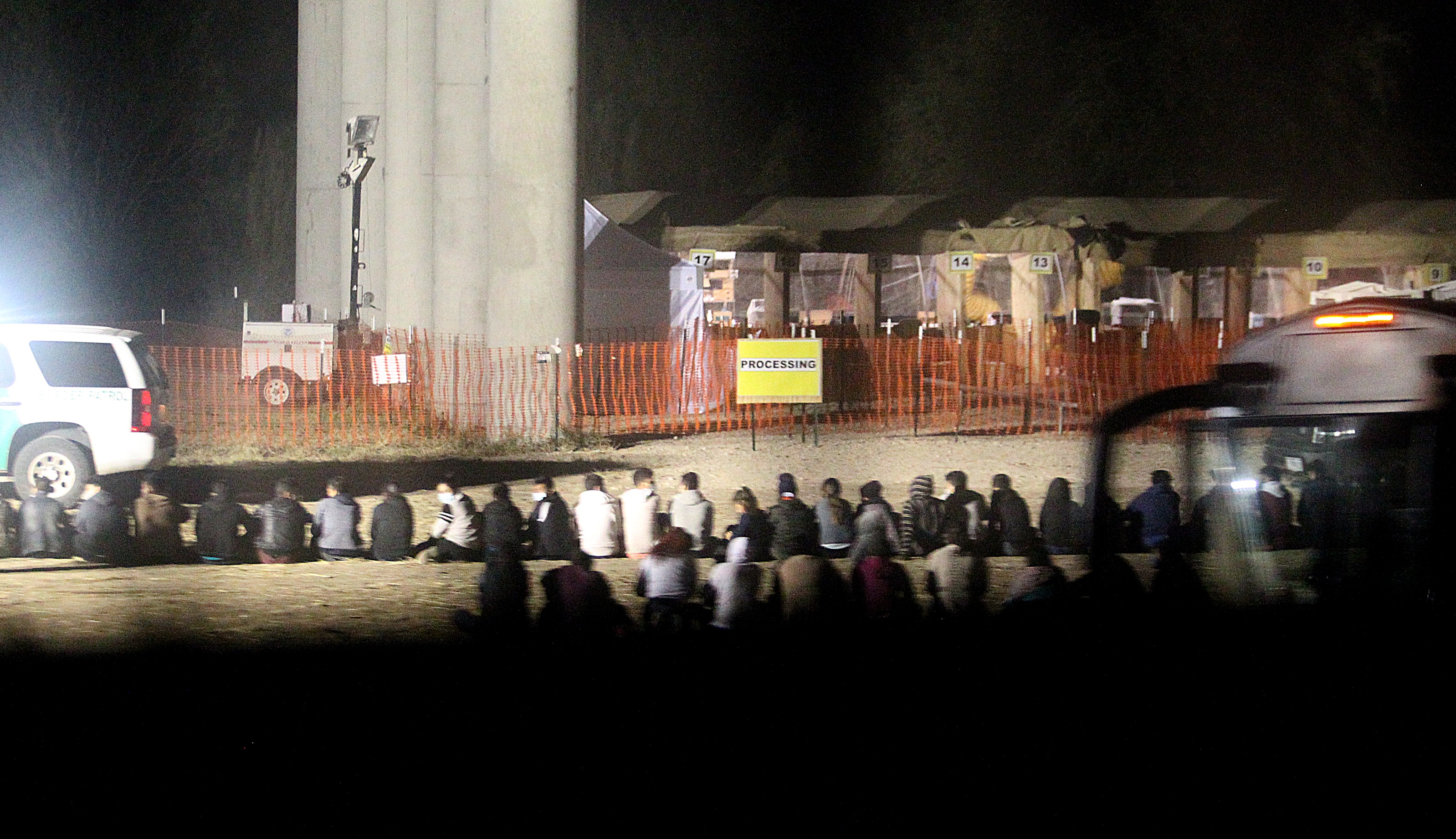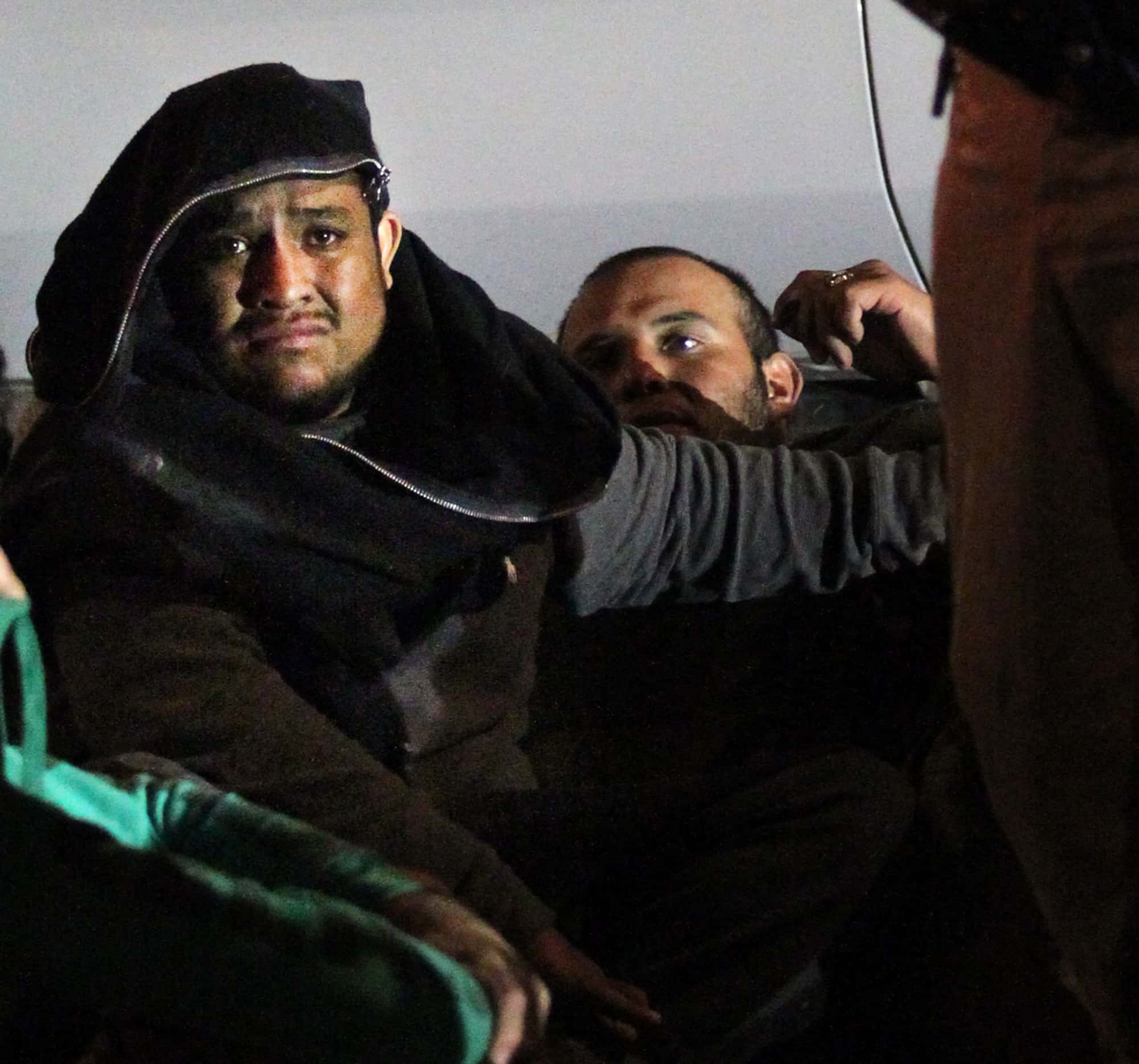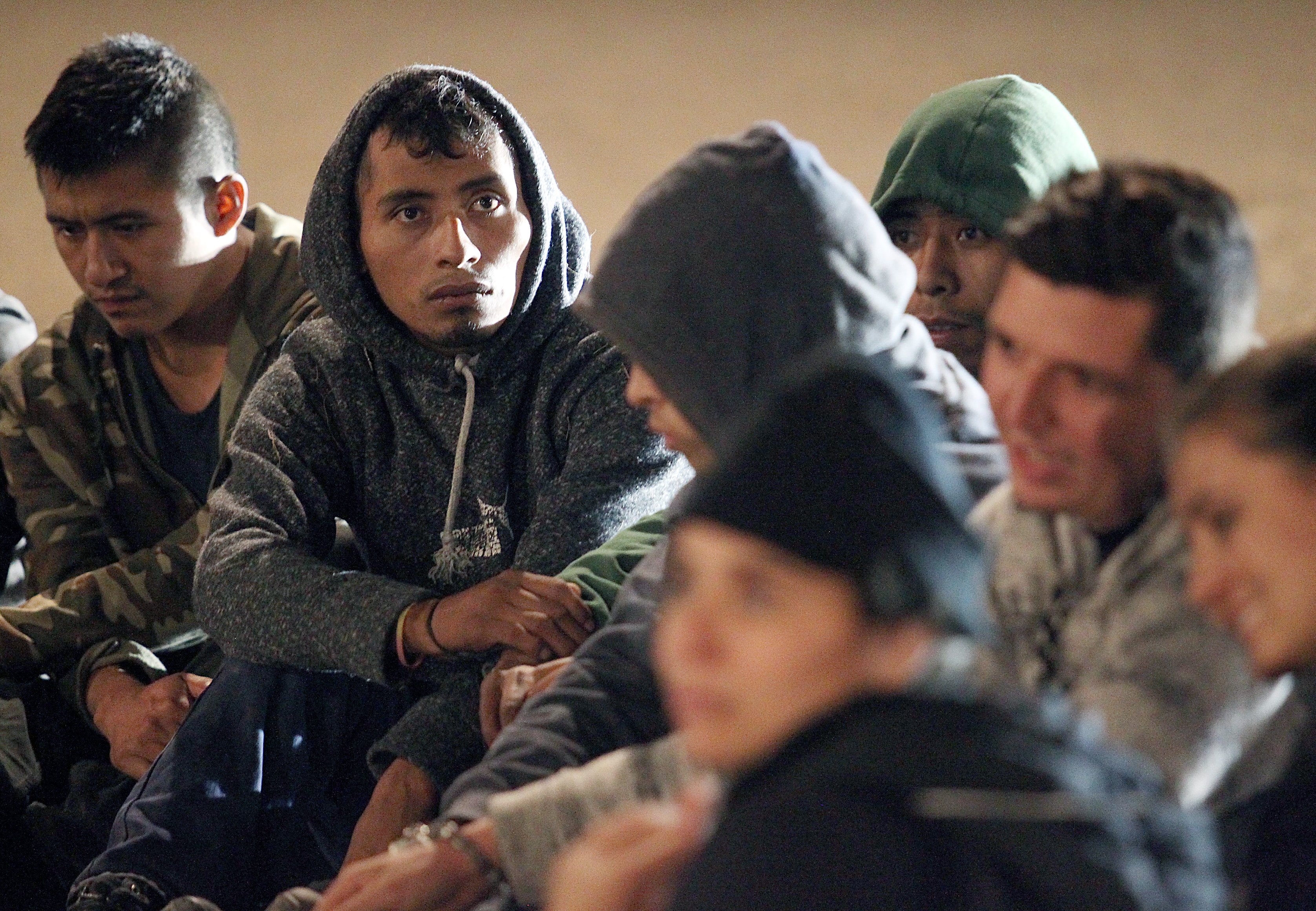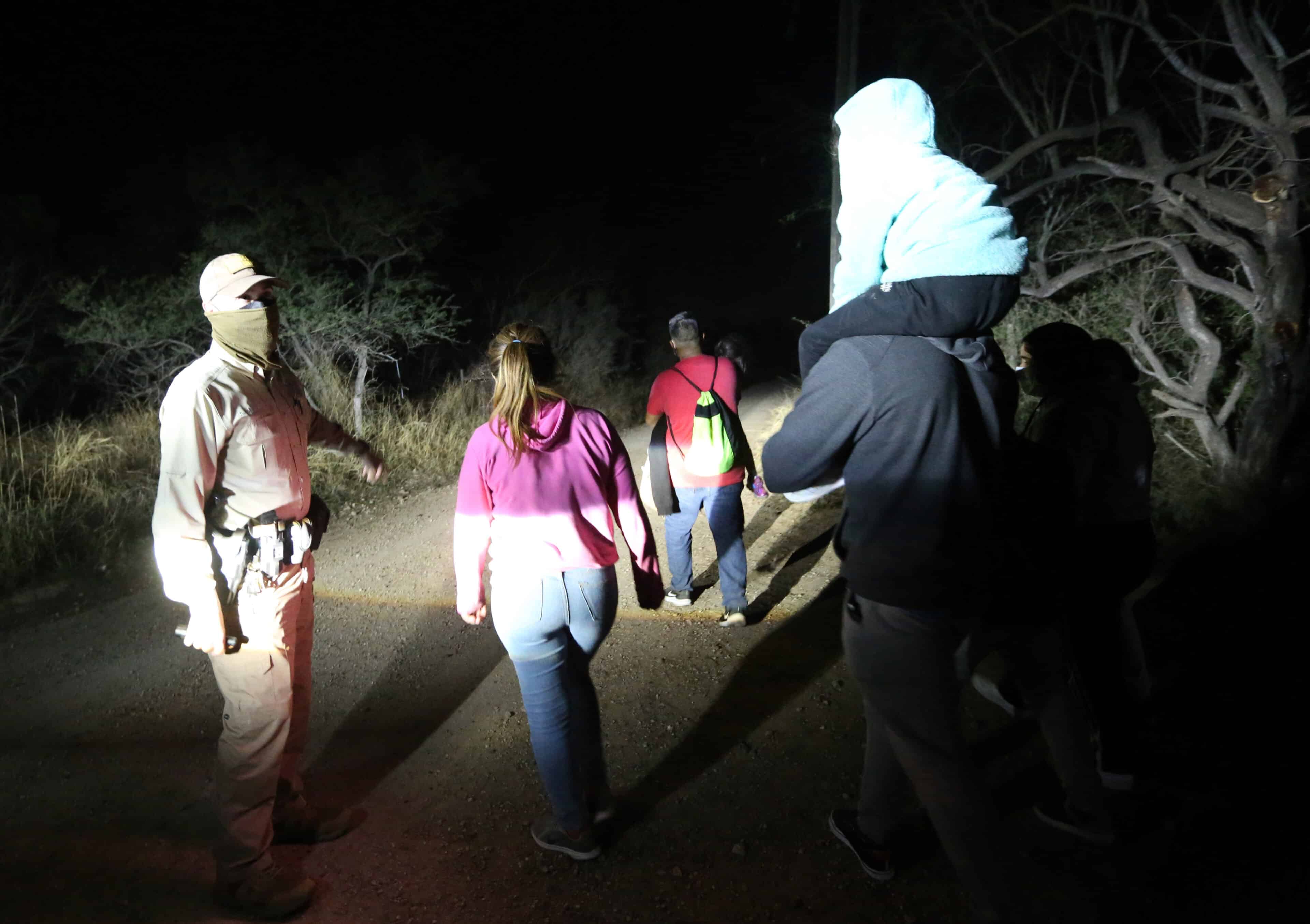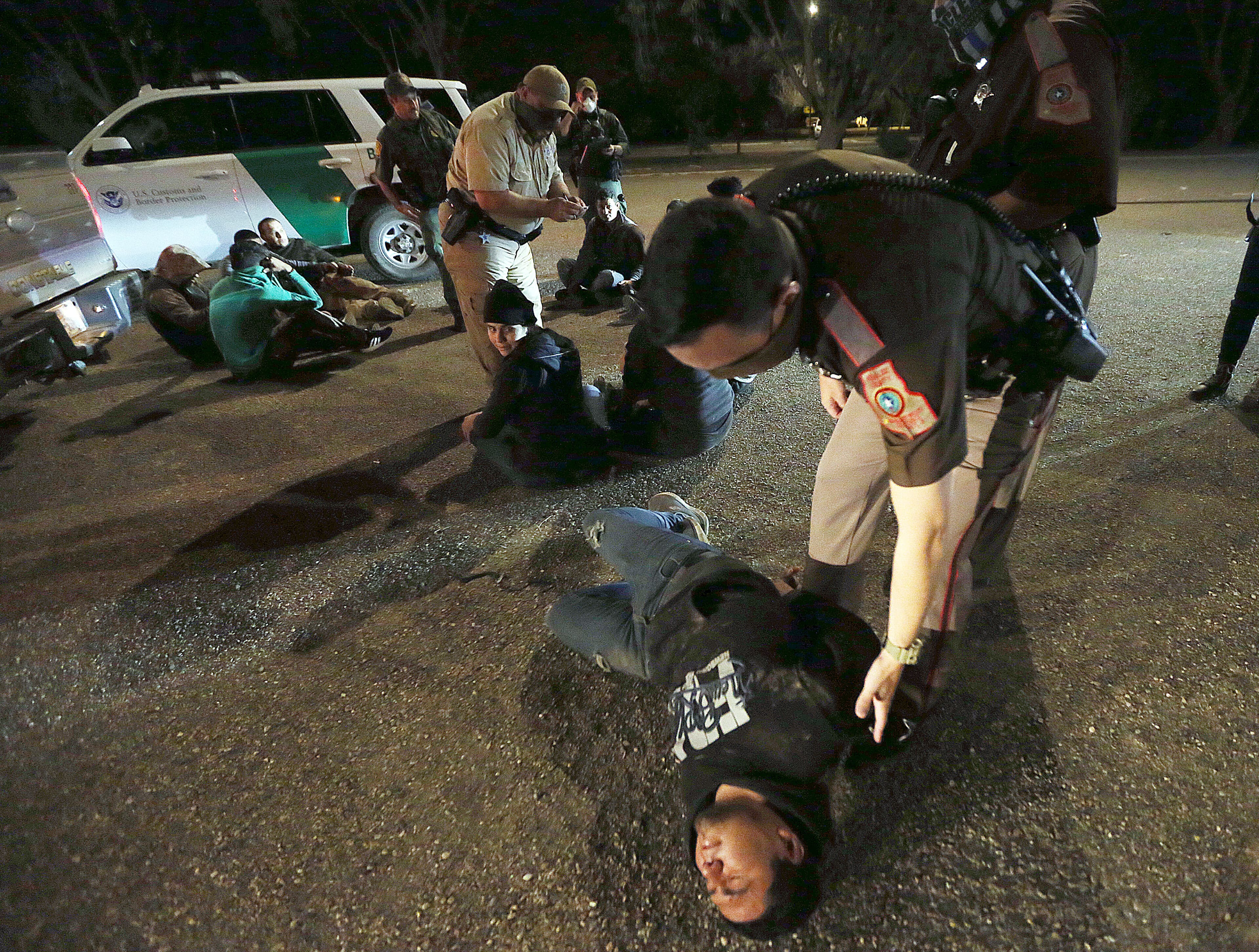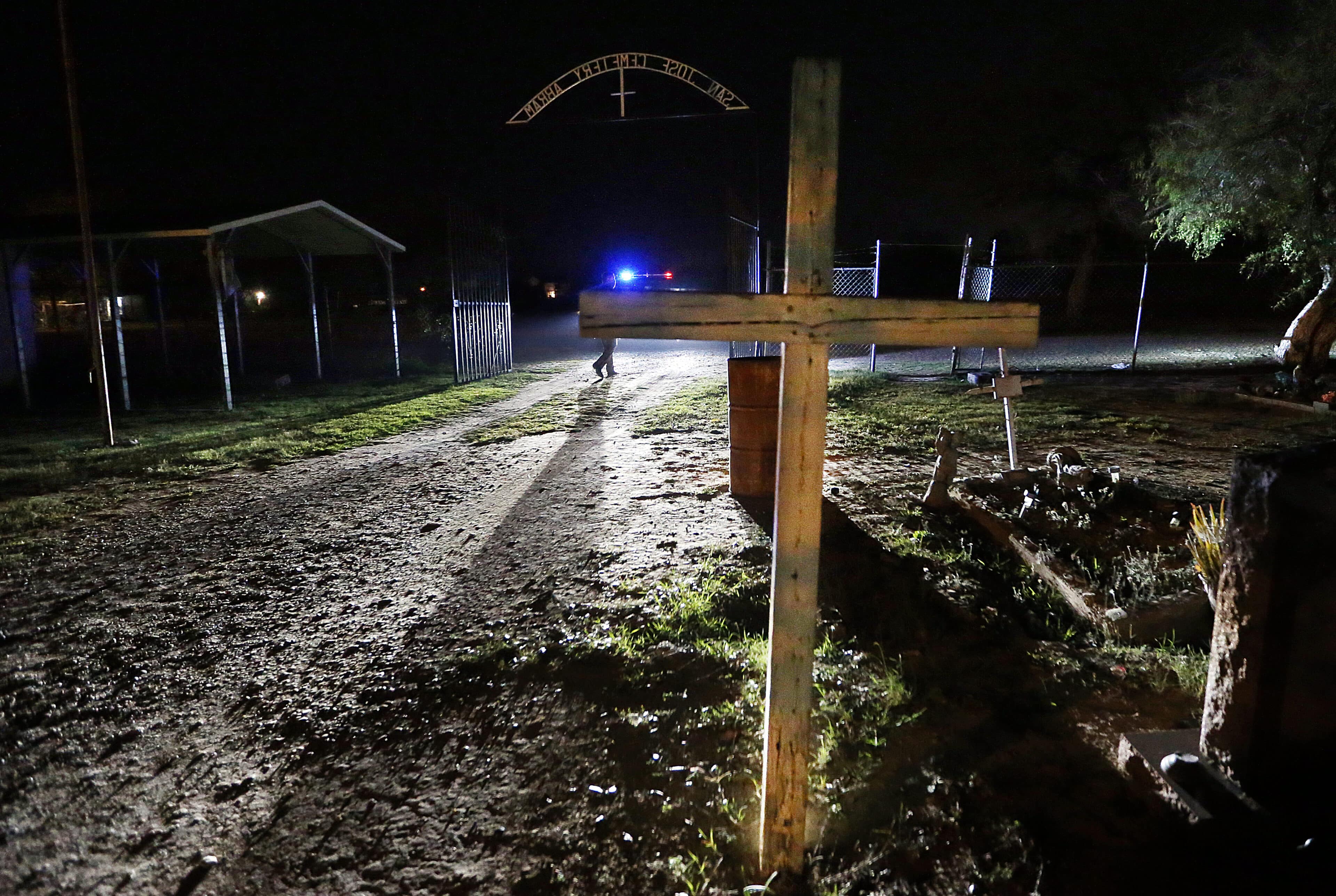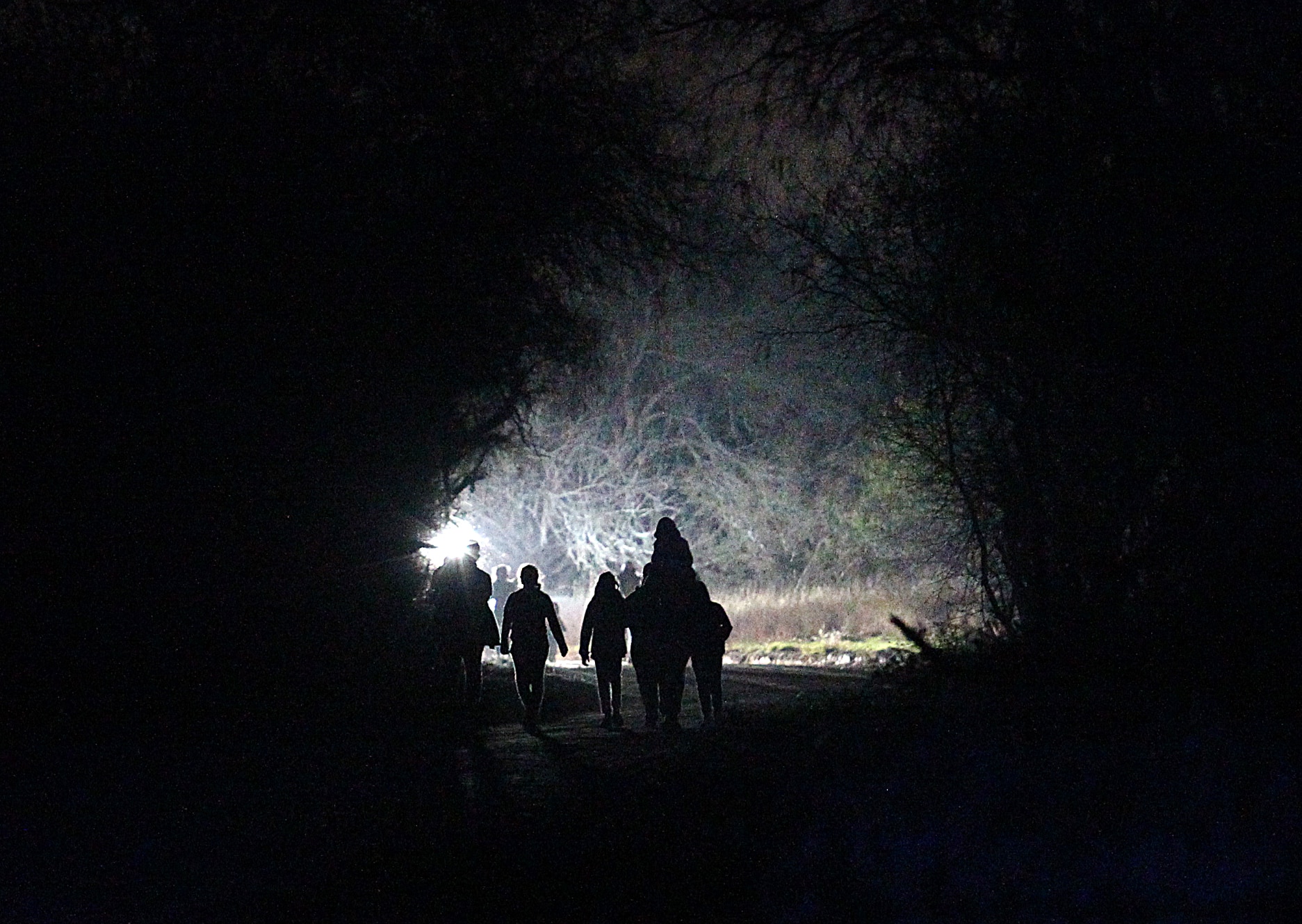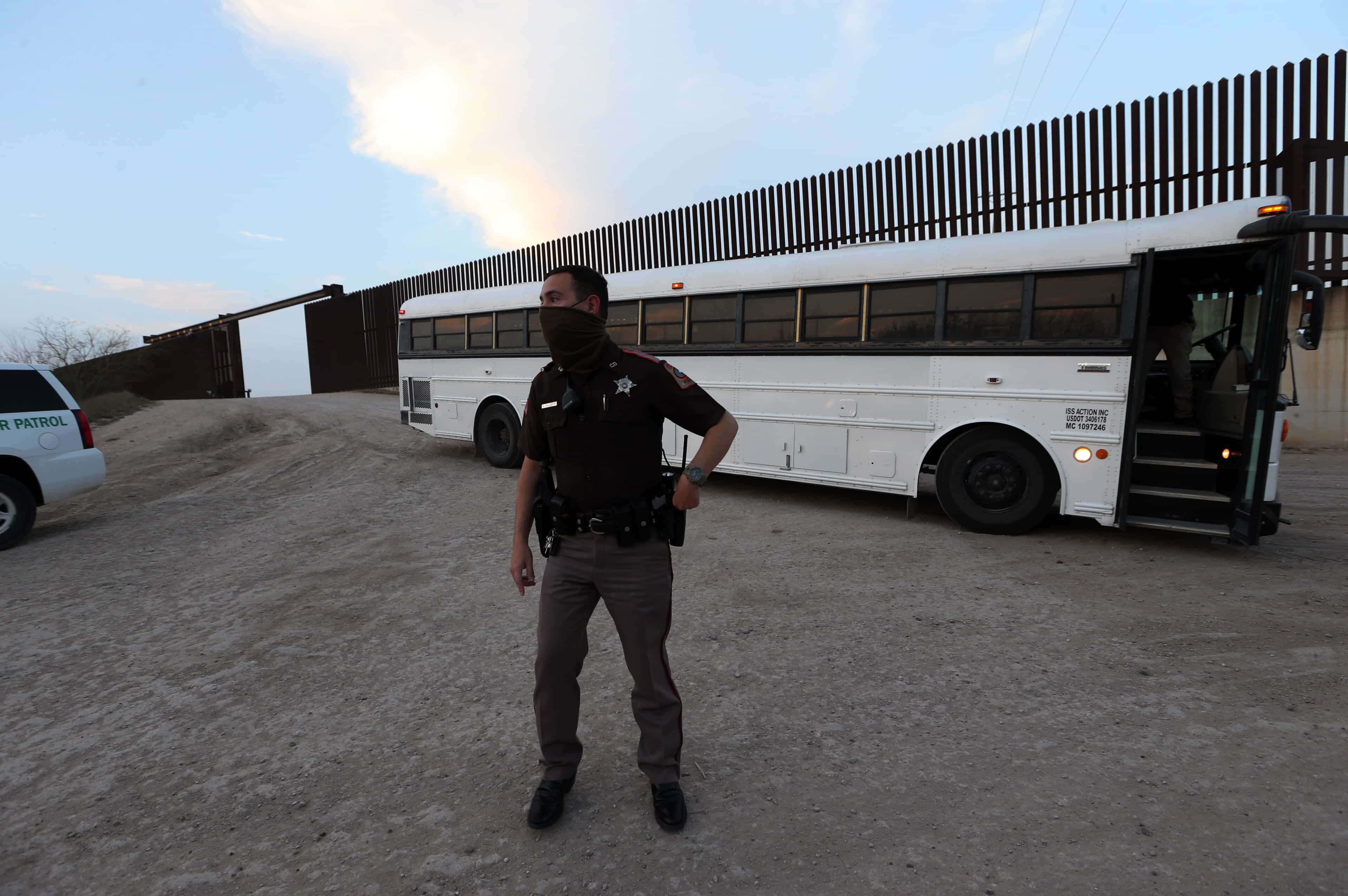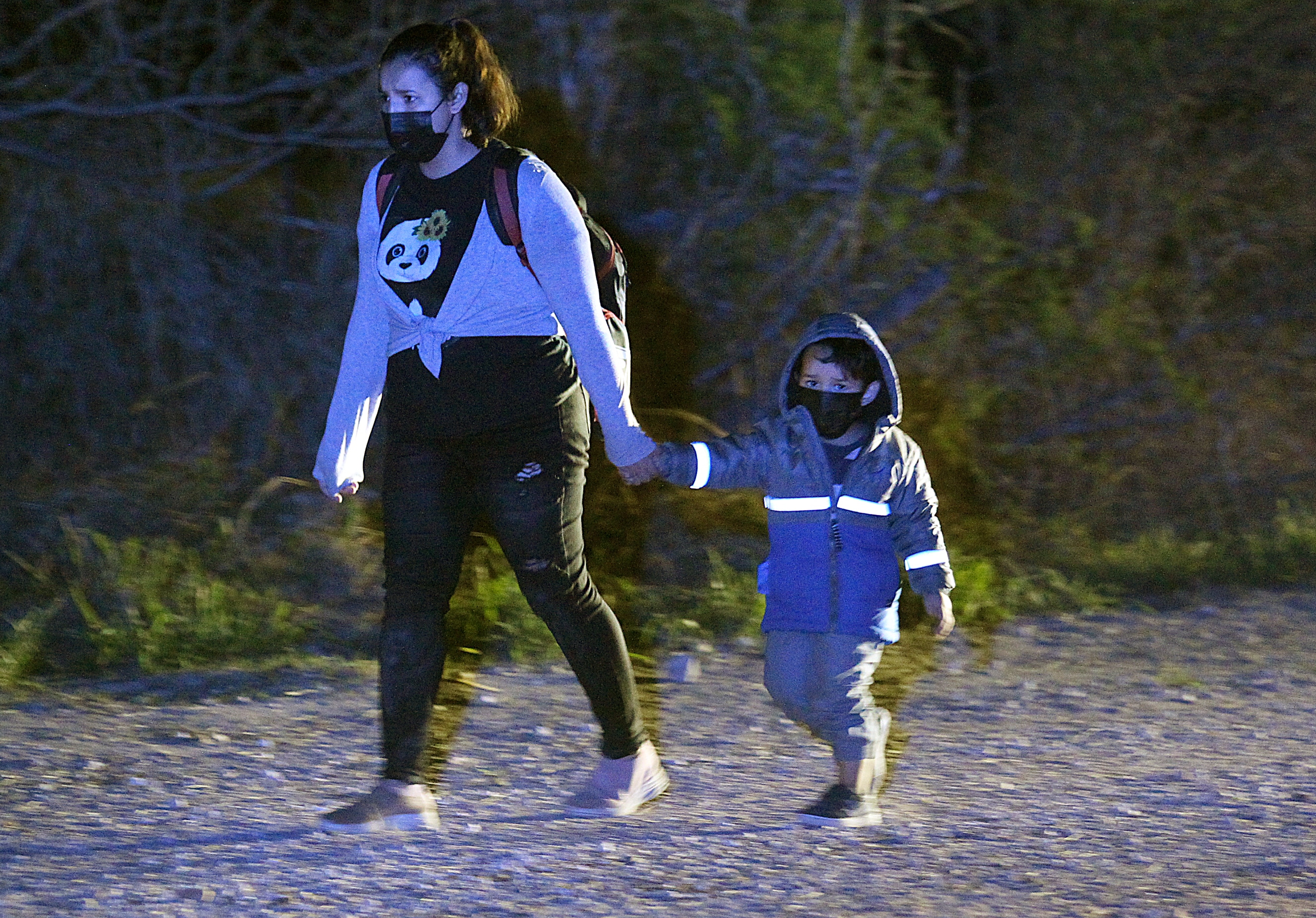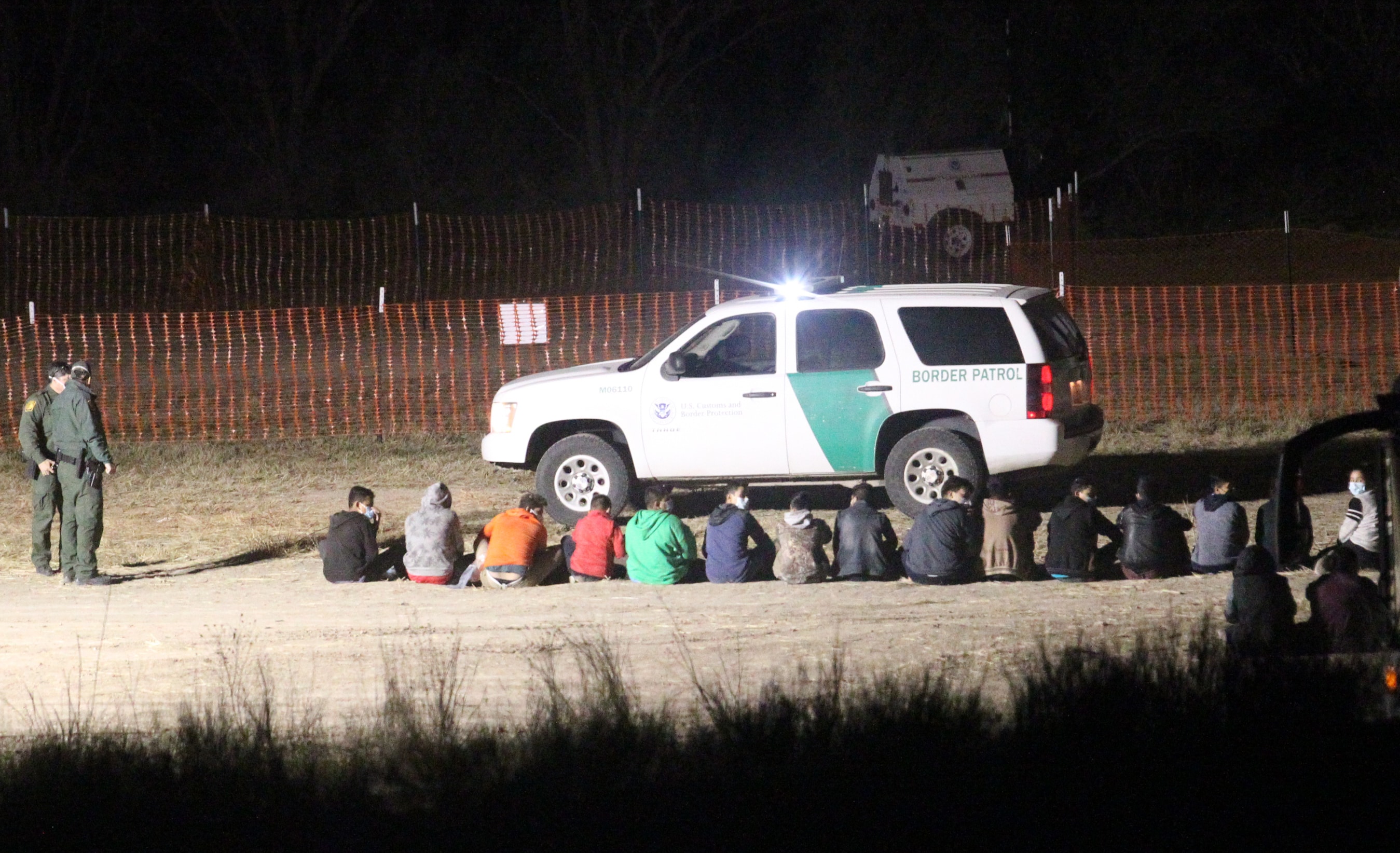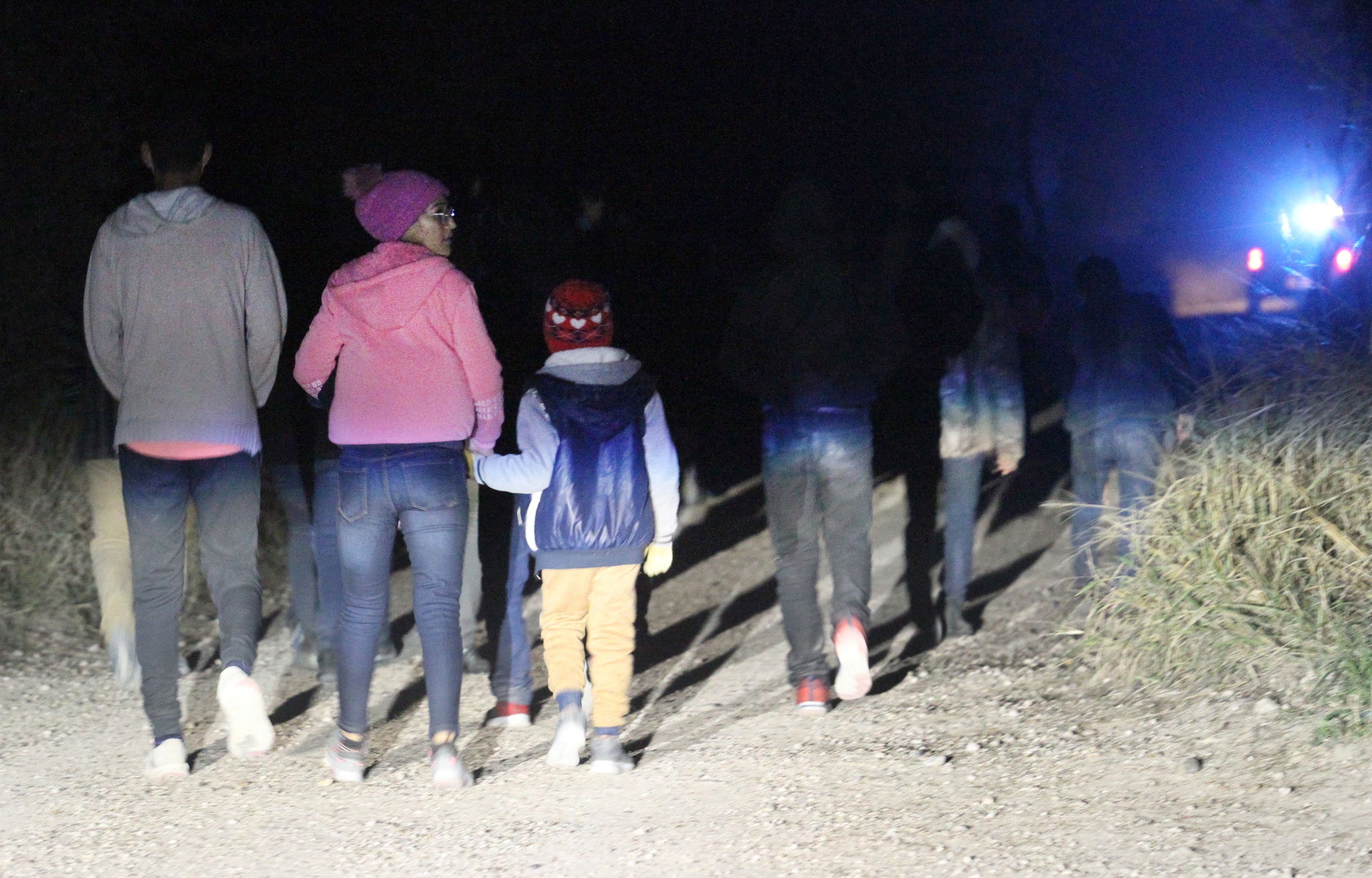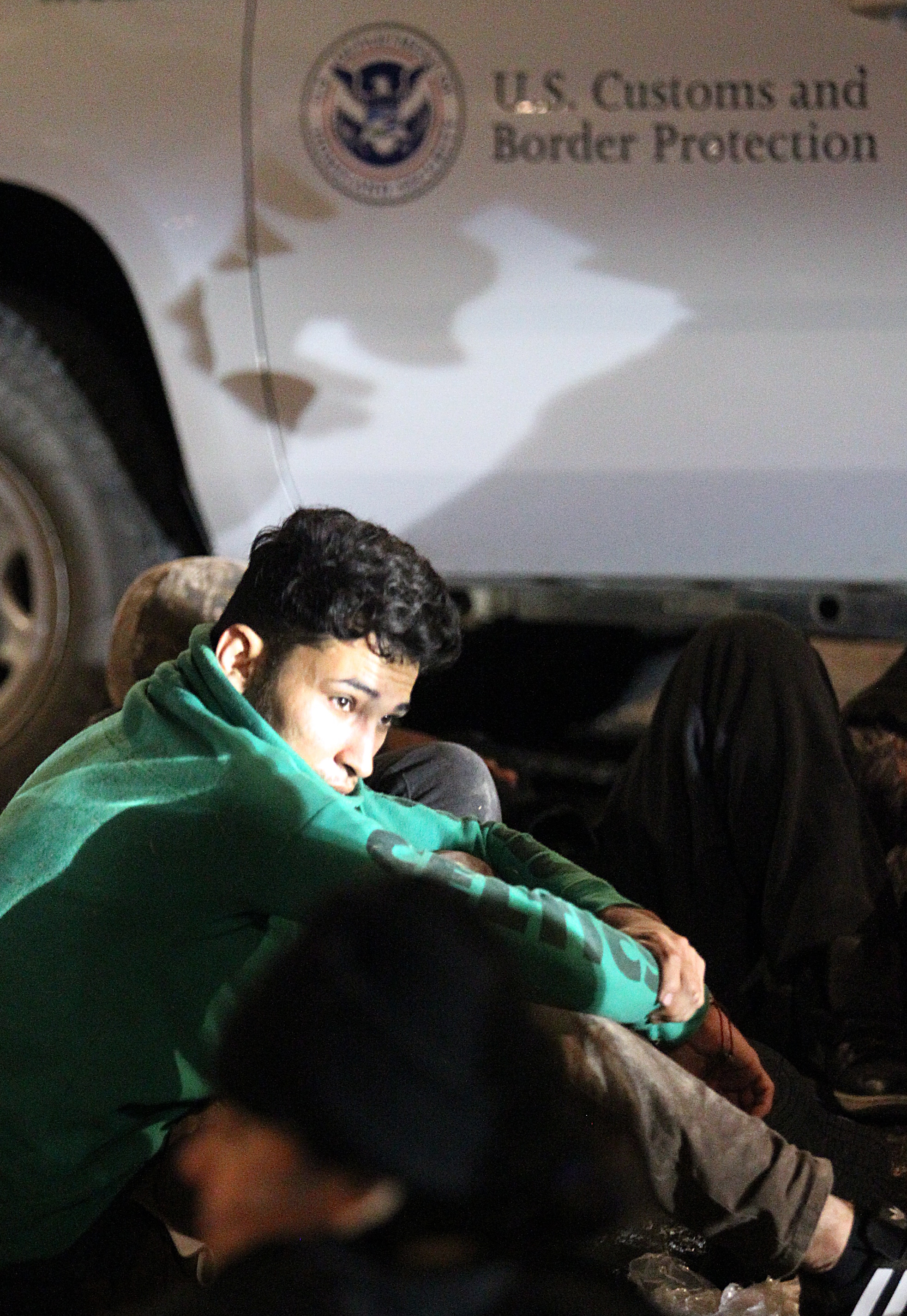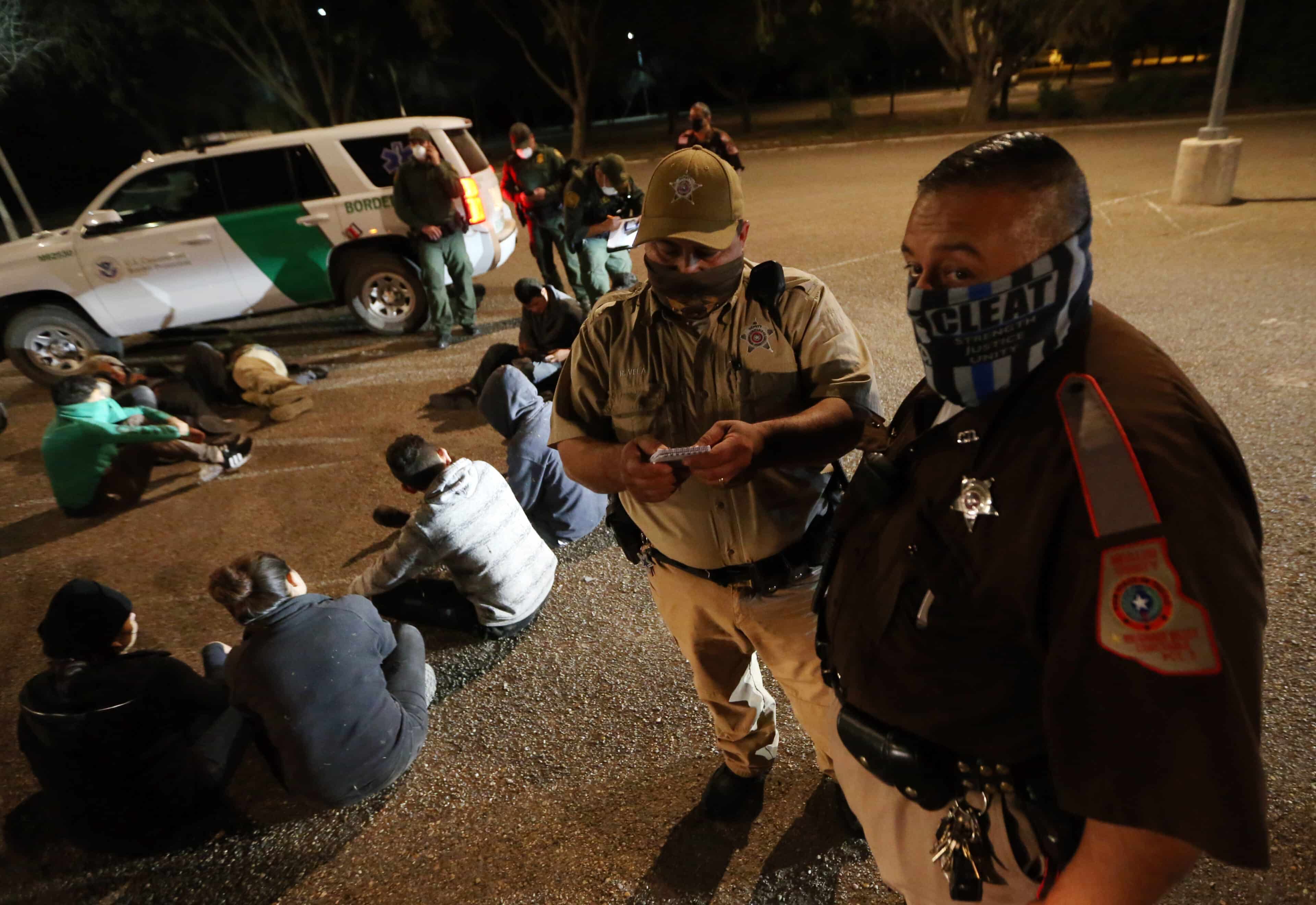On a winding caliche road south of Mission, Deputy Constable Arnold Salazar saw the bright headlights of a U.S. Border Patrol pickup truck pierce the twilight Saturday evening. Ten minutes before his shift would end, Salazar would witness the largest group of migrants he’d seen arrive at the border in years.
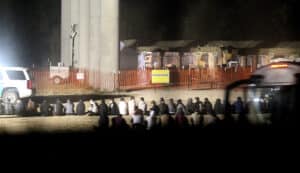
Undocumented immigrants sit next to each other underneath the Anzaldua’s bridge near the Rincon area. Border Patrol agents will process them in the small booths underneath the bridge on Saturday, Feb.06,2021 in Mission. (Delcia Lopez/The Monitor | [email protected])
“It’s going to be a busy night, and they’re probably expecting a hundred plus,” Salazar said after talking to an agent patrolling near the intersection of weaving backroads.
Stumbling feet through darkened borderlands triggered electronic field sensors monitored by federal agents.
“They had hits near the main drop off. They had hits where our dam is — where the IBWC dam is. So, they’re getting notifications through their systems on various points,” Salazar said.
Red and blue beacon lights flashing off a Border Patrol truck illuminated the wild brush lining the road as the vehicle approached the intersection at a crawling pace. As the driver pulled out in front of Salazar’s parked truck, the silhouettes of people standing in the bed of the moving truck emerged. A procession followed closely behind.
The low headlights from Salazar’s unit illuminated as hands holding a water jug, the hand of a child, decorated with wedding bands, or holding nothing passed through the light and disappeared in the distance.
Nearly 70 people followed behind heading toward the Anzalduas International Bridge where U.S. Border Patrol processes immigrants in an outdoor intake site set up a few weeks ago.
“This expansion was necessitated by the COVID-19 pandemic, but is also a logical use of the United States Border Patrol’s current resources. The ability to intake subjects as soon as they are apprehended in an outdoor setting limits potential exposure to agents and others encountered,” a CBP spokesperson said via a statement.
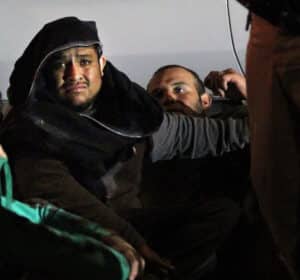
A worried look on his face ,an undocumented man is questioned by Hidalgo County constables and border patrol agents after crossing into the US on Monday, Feb.08,2021 in Mission. A group of 20 were apprehended by constables and border patrol agents.(Delcia Lopez/The Monitor | [email protected])
As a deputy assigned to the criminal enforcement section patrolling the Hidalgo County water districts of Precinct 3 — areas commonly known as thoroughfares for drug and human smuggling — Salazar is accustomed to providing assistance to federal partners when reports of border crossers surface from the multiple law enforcement radio channels he tunes into during his shift.
An influx of immigrants crossing in 2018 prepared the former A&M law enforcement officer for these calls.
“Within an hour we would detain anywhere from 100, 200, 300,” Salazar said, recalling the second year serving under his boss, Hidalgo County Precinct 3 Constable Larry Gallarado. His memory goes further back.
“Back in 2013 or 2014, Anzalduas Park area was the highest crossing in the nation,” Gallardo said, referring to an area that falls under his office’s jurisdiction. “We had busloads that were just coming and giving themselves up back around that time. It hasn’t been like that lately, but I think it’s kind of picked up.”
The groups drastically shrunk after the Trump administration implemented programs curtailing the ability of immigrants seeking asylum to stay in the country.
Deputies continued working under federal and state programs like Stonegarden and Operation Border STAR, though the assistance needed dwindled.

A group of undocumented immigrants are apprehended by Hidalgo County constables and border patrol agents on Monday, Feb.08,2021 in Mission. (Delcia Lopez/The Monitor | [email protected])
“There’s always been small numbers — six, seven, eight a day,” Gallardo said, referring to the number of migrants his deputies detained during the Trump administration.
“Many can say the relaxed pressure of a new administration at the highest level; I don’t know,” Gallardo speculated about the reason for the current increase.
President Joe Biden removed or dismantled many of the programs and agreements that kept immigrants seeking asylum out of the country. In recent weeks, federal agents began releasing migrant families seeking asylum into the U.S. across the Rio Grande Valley while they wait for their immigration court hearing, a practice halted via executive orders and a pandemic.
While he considers the influx during then Vice President Joe Biden’s last term in office, Gallardo said, “Maybe headed towards that.”
Salazar acknowledges the increase with optimism.
“We’re seeing it increase, and it’s something that we’re still able to properly address and operate,” he said.
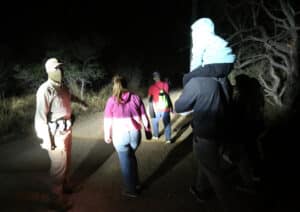
Hidalgo County constable Arnold Salazar directs a family unit to the staging area where they will be processed by border patrol on Saturday, Feb.06,2021 in McAllen. (Delcia Lopez/The Monitor | [email protected])
All 20 deputies with the constable’s office are waiting to receive the second dose of the COVID-19 vaccine later this week. Contracting the virus is a concern that falls out of Salazar’s mind as he uses his medical expertise to help migrants who are sick or injured on the trail.
Instead, the deputy focuses on his approach.
On Saturday night, a young woman separated from the group led by border patrol as she panicked over a lost phone in the dark.
Salazar popped out of his truck and yelled, “Quedate con el grupo, madre.” Stay with the group.
“We have to make sure these individuals don’t fear us,” he later said, though he was dressed in a tactical uniform with a handgun holstered to his belt and a face mask covering most of his face.
Salazar is aware of the intimidation his presence could provoke.
“These people are fleeing their country that is not stable, that extorts them. Their own law enforcement either in Mexico, Central America or South America, they’re corrupt. All they see when they’re crossing is a fully uniformed officer,” he said.
The woman pointed in the direction behind her as Salazar walked toward her. He walked patiently a few feet with her looking for the phone before Salazar instructed her not to fall behind the U.S. Border Patrol queue.
By Monday evening, the calls pivoted back toward local community emergencies.
Salazar went to the home of a man claiming another man stole his gold chain and brandished a weapon. A showering woman reported hearing a knock at her restroom door while she was supposed to be alone in her home.
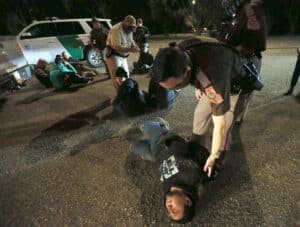
An unidentified undocumented immigrant attended by constable Arnold Salazar on Monday, Feb.08,2021 in Mission. The group was apprehended near Bentsen State Park. (Delcia Lopez/The Monitor | [email protected])
The deafening sound of the wheels on the deputy’s truck roaming over gravel, a blacktop road or caliche, was broken by a few calls related to border crossers. One report came from a deputy who had helped detain a group of a dozen in a parking lot around 9:30 p.m.
All were adults from Honduras, Guatemala and Mexico. Most were cooperative and talkative, except for one young man who reportedly tried to flee and was restrained by his hands and laying on the ground.
Salazar showed up while other deputies and Border Patrol agents took down names, ages and nationalities. A transport bus was set to arrive shortly.
Though the smaller group demonstrates an inconsistent increase, deputies and agencies alike are preparing for the possible adjustments.
“I know it’s going to be a little bit more busier for us, and we have to adapt to it,” Salazar said.
Gallardo is concerned as Anzalduas Park, a popular outdoor visiting area for locals and smugglers, reopened this week. His deputies will remain vigilant.
“We’re here to help,” he said.

